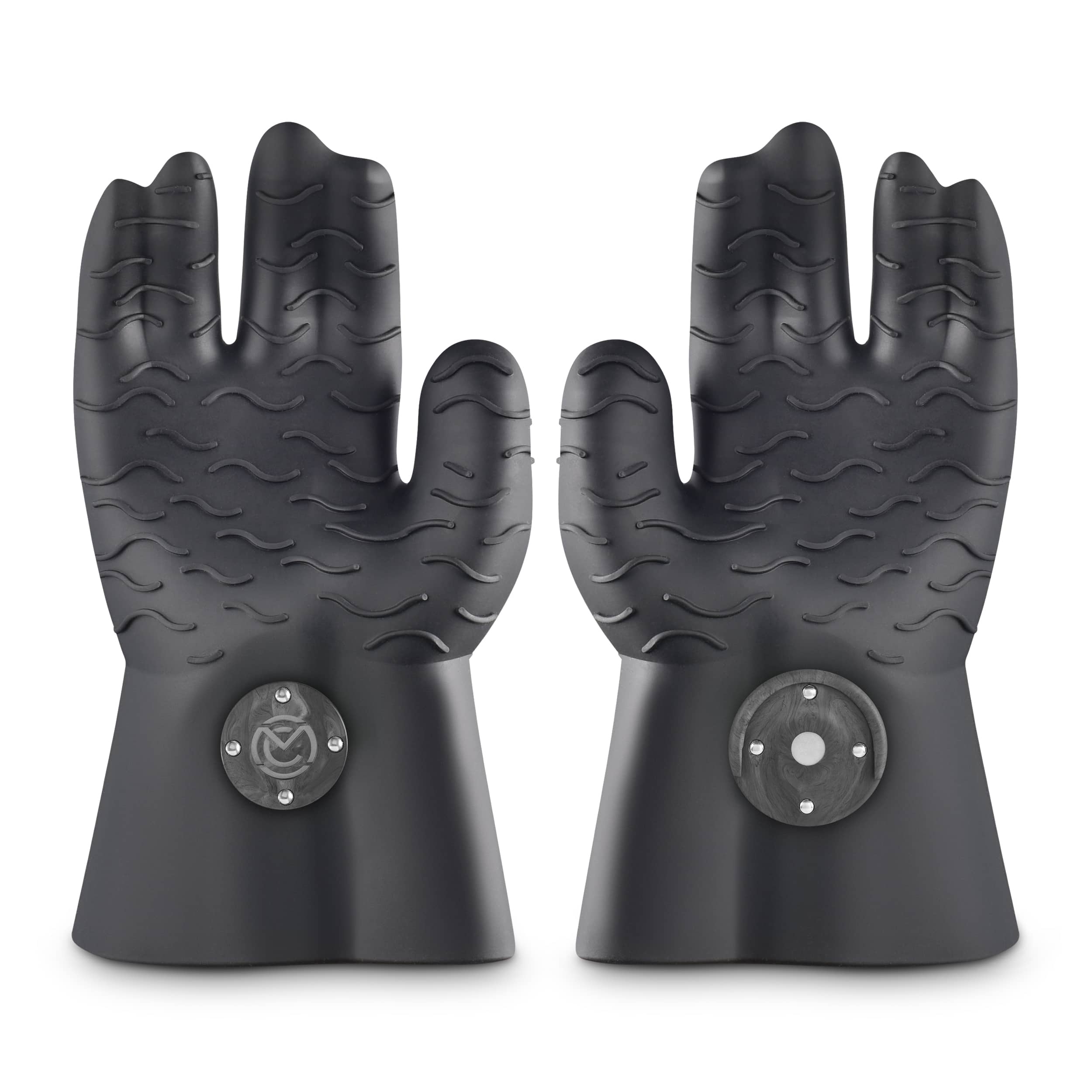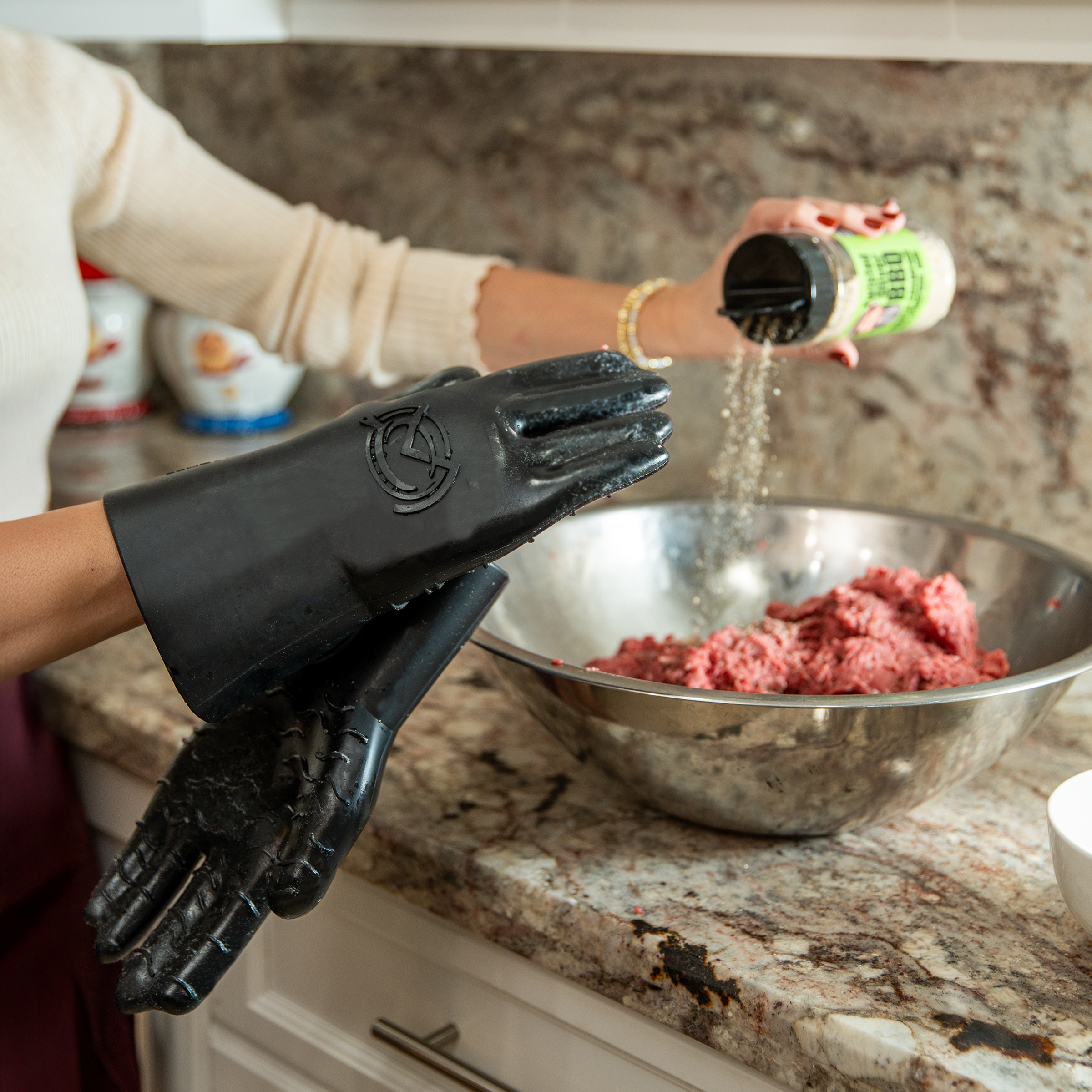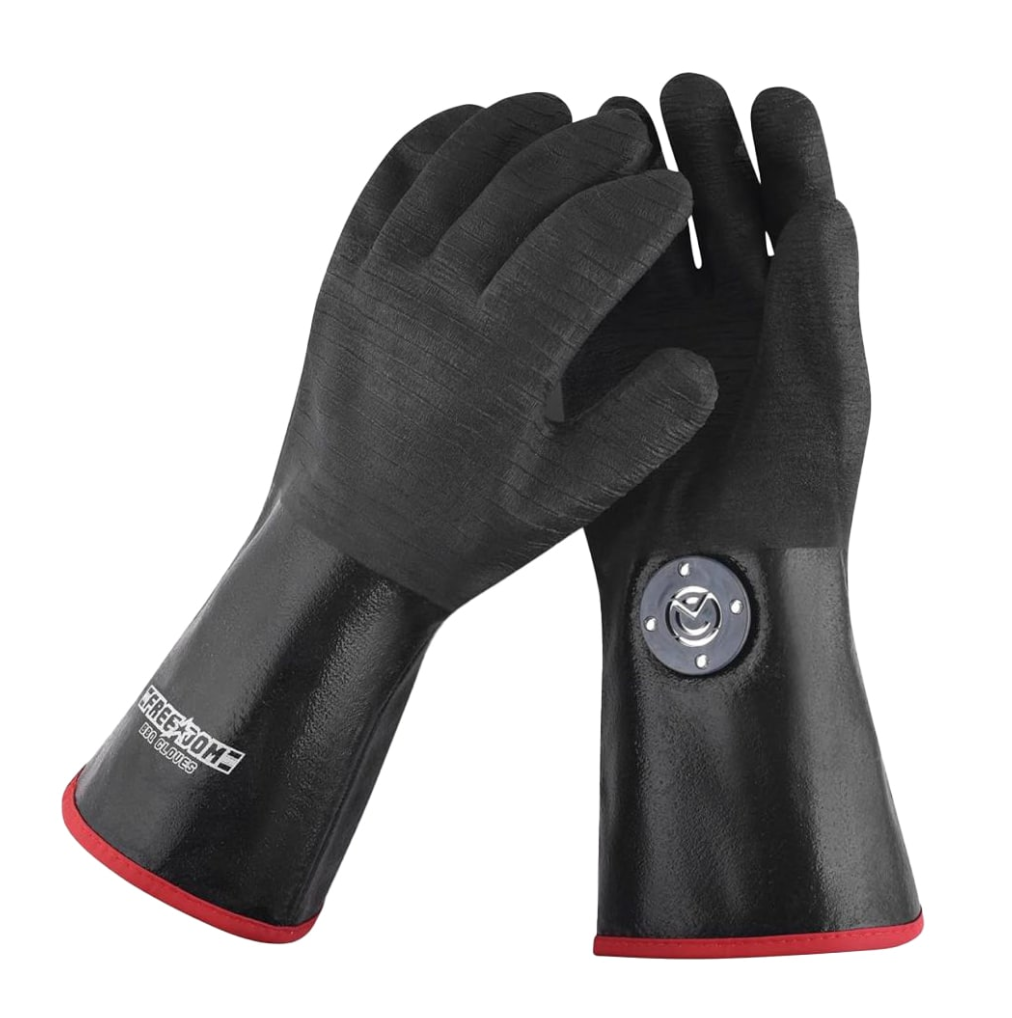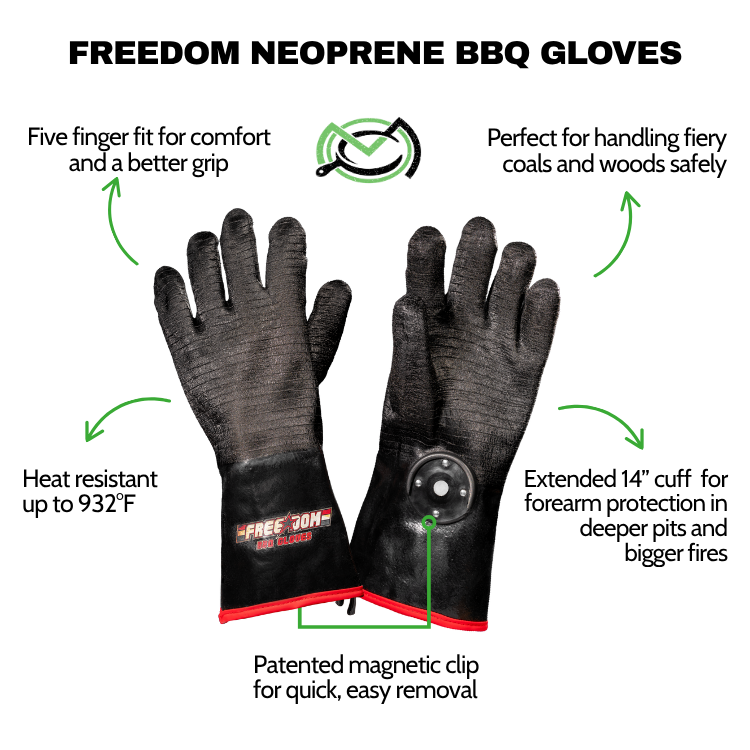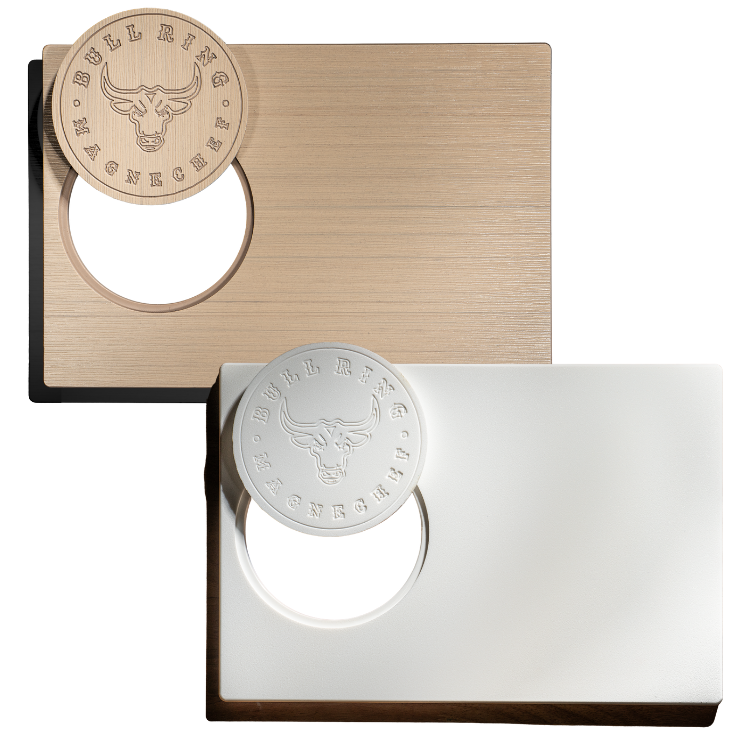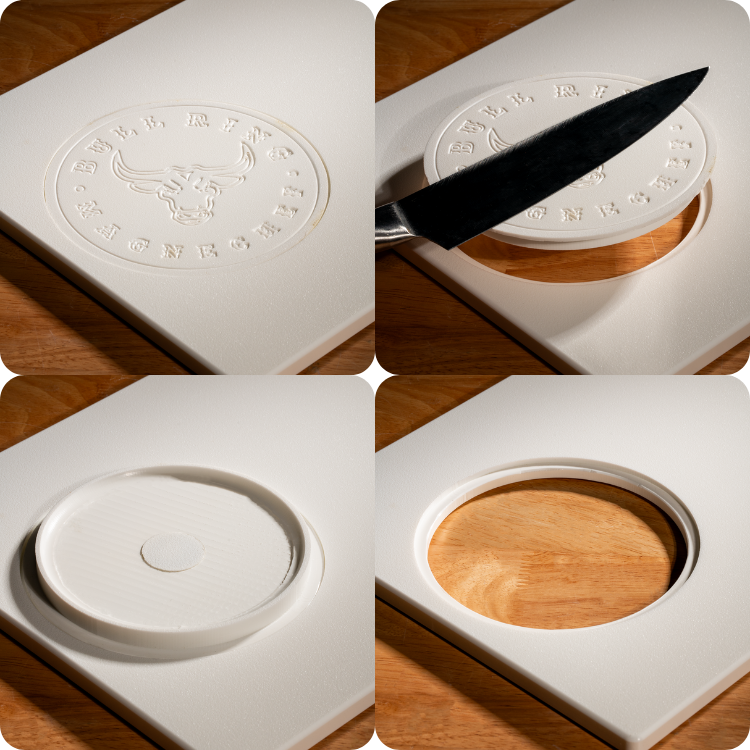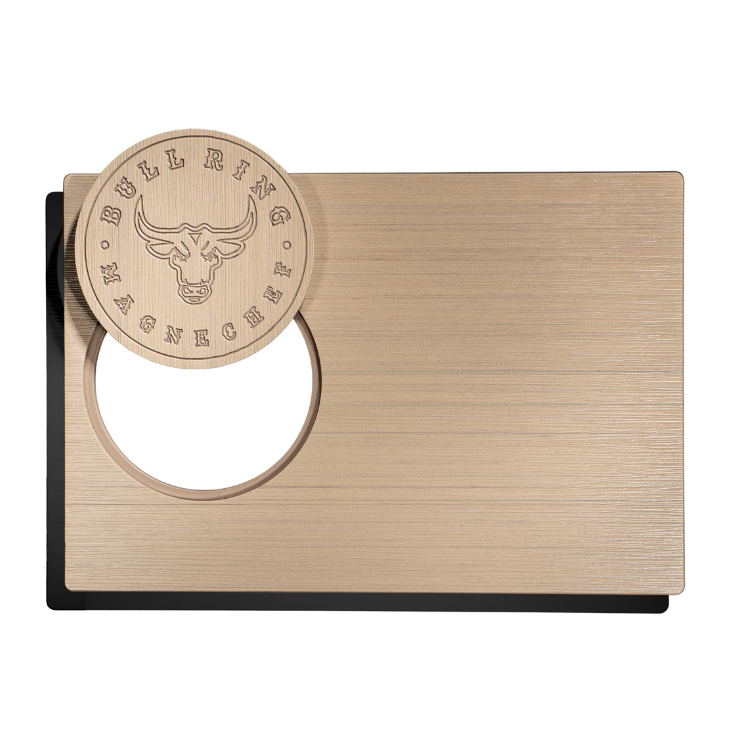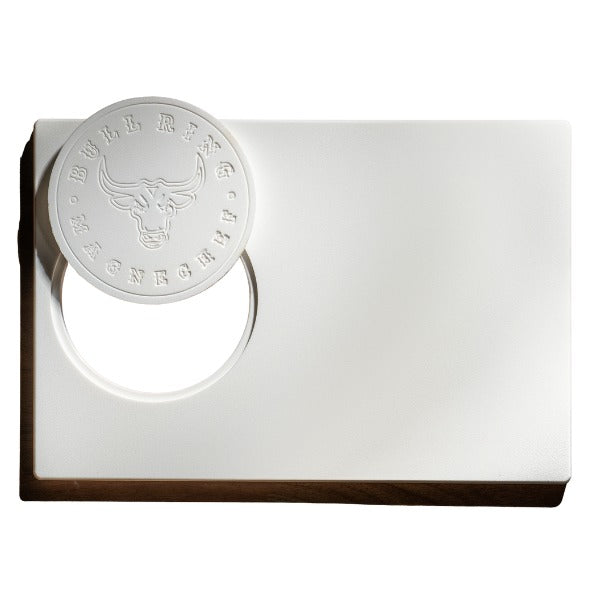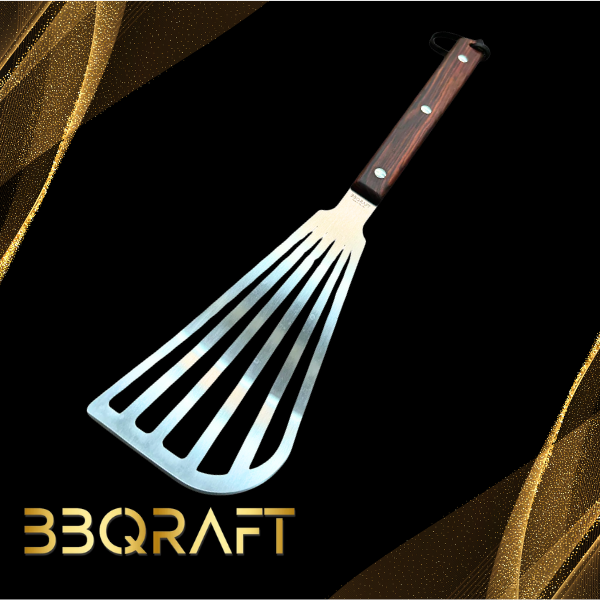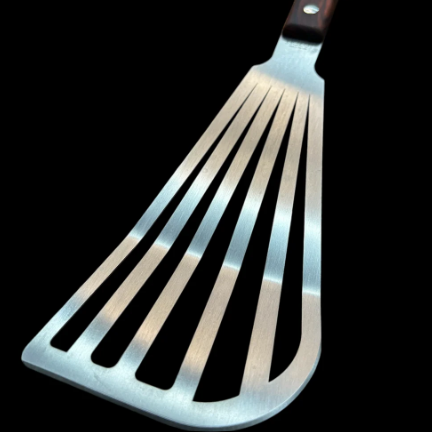There’s nothing like the sound of a sizzling ribeye steak hitting a hot grill—BBQ lovers know the thrill, but getting that perfect sear without overcooking the inside can trip up even the best of us. So many grill-outs go wrong just by choosing the wrong cut, skipping the right seasoning, or not using good tools. The key is picking a well-marbled ribeye, letting it reach room temperature, and seasoning it all over for flavor in every bite.

We make things simple and safe with MagneCHEF gear, built by a firefighter for people like us who love grilling but hate burns and mess. Swapping out regular gloves for MagneCHEF magnetic gloves or Freedom Gloves means we don’t fumble hot steaks or lose grip on our tools. Use a solid thermometer to hit perfect doneness every time—no guessing, just juicy and tender ribeye, ready for the table in minutes.
Key Takeaways
- Start with a thick, marbled ribeye at room temperature.
- Season well, grill hot, and monitor doneness with a thermometer.
- Use MagneCHEF gear for safety, control, and easy handling.
Selecting the Perfect Ribeye Steak

Choosing the right ribeye steak is key to a juicy, tender steak with great flavor. Let's explore the best cuts, what marbling means, and how to pick and store steaks for the grill.
Types of Ribeye Steaks
Ribeye steaks come in a few different styles. We often see bone-in ribeye, which still has the rib bone attached, or boneless ribeye with the bone removed. Bone-in ribeye steaks keep more moisture and flavor during grilling. Boneless ribeyes are easier to handle and cook a bit faster.
We can also find a ribeye roast, which is a large, uncut rib-eye perfect for feeding a crowd. For grilling, we should look for steaks that are at least 1-inch thick. This helps keep the steak juicy and allows for a nice sear. Thickness and cut can make a big impact on taste and texture.
Some butchers label a small, highly marbled section of the ribeye as the “deckle” or “ribeye cap.” It’s known for max tenderness and flavor. Whichever type we pick, a fresh, even red color means the ribeye is in good shape.
Understanding Marbling and Quality
Marbling is the thin streaks of fat running through the meat. More marbling equals a more tender steak and bigger beef flavor. When shopping, we want to look for fine, even fat marbling across the center and edges of the ribeye. This fat melts while we grill, making the steak juicy.
Quality grades can help us pick the right ribeye. The main USDA grades are Prime, Choice, and Select. Prime ribeye steaks have the most marbling and are usually sold at specialty stores or butchers; they’re ideal for grilling. Choice is also a good pick, with solid marbling at a lower price. Select grades have the least marbling, so they’re not as tender or rich.
We should also use our senses—fresh ribeye doesn’t smell sour or feel slimy. Always check for a firm texture and avoid any gray or brown patches.
How to Choose and Store Ribeye
Pick ribeye steaks that feel firm and cold when touched. If buying a frozen ribeye steak, check there’s no ice buildup or freezer burn. We recommend storing raw ribeyes in an airtight container or wrapped tightly with plastic wrap to avoid drying out in the fridge.
Ribeye stays fresh for 3-5 days in the refrigerator at or below 40°F. If we’re not cooking in that window, freezing is best. Place steaks in a freezer-safe bag or vacuum-seal for up to 6 months. Thaw in the fridge a day before grilling for the best results.
For leftover grilled ribeye, store slices in a sealed container and use within 3 days. Our MagneCHEF Gloves are perfect for safe handling, and a good thermometer helps us check temperatures. Don’t forget to clean the grill with a sturdy grill brush before and after use.
Preparation and Seasoning

A great grilled ribeye steak starts before it ever hits the grill. The right ingredients and proper prep make sure our steak is full of flavor and cooked just the way we want.
Essential Ingredients and Steak Rubs
For a classic ribeye steak, we use basic ingredients: kosher salt, freshly ground black pepper, and a small amount of oil. This simple combo gives our ribeye a savory crust and lets the beefy flavor shine.
We like to season steak generously on all sides. Salt brings out juices, and black pepper adds a mild kick. For even more flavor, we mix a rub with garlic powder, onion powder, paprika, thyme, and a pinch of cayenne pepper. This blend sticks well when we coat the steak with a light layer of olive or canola oil first.
Here's a quick steak rub recipe table:
| Ingredient | Amount |
|---|---|
| Kosher Salt | 1 tbsp |
| Black Pepper | 1 tsp |
| Garlic Powder | 1 tsp |
| Paprika | 1 tsp |
| Onion Powder | 1/2 tsp |
| Cayenne Pepper | 1/4 tsp |
| Thyme | 1/2 tsp |
Mix well and pat it onto the steak for a bold taste every time.
Preparing the Steak for Grilling
We always start with steaks at room temperature. Letting the ribeye sit out for 30-40 minutes helps it cook more evenly, so no cold spots stay in the middle.
Before grilling, we pat each ribeye dry with paper towels. This helps the oil and seasoning stick better, and we get a crispier crust. We use MagneCHEF Gloves for safe handling, especially if we’re using a steak rub or oil.
Brush each side with olive or canola oil. Coat every surface with salt, pepper, or our favorite seasoning blend, pressing it in with our hands. Don’t forget the edges!
A clean grill is key, so we use a grill brush to scrape grates. For checking doneness, an instant-read thermometer is the best tool. Getting these steps right makes every grilled ribeye steak tender, flavorful, and ready to impress.
Grilling Ribeye Steak to Perfection

Great grilled ribeye steak starts with the right grill, a solid cooking method, and a few tricks for top flavor and looks. Proper setup and technique help us avoid common mistakes and bring out the best taste in every bite.
Choosing Your Grill and Setup
We can use either a gas grill or a charcoal grill for grilled ribeye steaks. Gas grills make it easy to control heat. Charcoal grills give a smoky flavor and can reach higher temperatures.
Before grilling, we should preheat the grill for at least 10–15 minutes. High heat creates the classic sear and true steakhouse taste. It’s key to clean the grill grate well so the steak doesn’t stick. A grill brush works fast and keeps the surface fresh.
Set up two cooking zones: one side on high heat for searing, and a cooler side for finishing the steak. This way we can move the ribeye if flare-ups start or if we need slower cooking. Always have our MagneCHEF Gloves handy for safety when moving the grates or handling hot tools.
Step-by-Step Grilling Method
We start with a ribeye that’s at room temperature. Pat it dry and season it well on all sides with salt and pepper. Get the grill hot—about 450°F for searing.
Lay the steak on the hottest part of the grill. Sear the first side for about 3–4 minutes without moving it. Flip the steak with tongs, then sear the other side for another 3–4 minutes. For a thicker steak, we may need to move it to the cooler zone and let it reach the desired doneness.
Always use a thermometer to check internal temp:
| Doneness | Temp (°F) |
|---|---|
| Rare | 125 |
| Medium Rare | 130–135 |
| Medium | 140–145 |
| Medium Well | 150–155 |
| Well Done | 160+ |
Let the steak rest for at least 5 minutes before slicing. We use our Freedom Gloves to handle hot steaks safely after grilling.
Managing Flare-Ups and Grill Marks
Flare-ups happen when fat drips onto the burners or coals. To manage these, keep a cooler side on the grill. If flames burst up, quickly move the steak to the cooler zone until the fire settles.
Creating bold grill marks is easier on a clean grill grate that's been oiled. Place the steak down and resist moving it for 2–3 minutes per side. For crosshatch marks, rotate the steak 45 degrees halfway through searing each side.
Use long tongs to flip steaks instead of pressing down. This keeps juices inside. After cooking, brush the grates again with a grill brush. Keeping our grill and workspace clean is key for safety and steak flavor every time we grill.
Serving and Enjoying Your Grilled Ribeye

Serving grilled ribeye is about getting the doneness right, choosing tasty sides, and making the most of leftovers. With a few simple steps and tools, we can enjoy a steakhouse experience at home.
Doneness Guide and Resting Period
The perfect steak starts with cooking it to the doneness we enjoy most. Using a meat thermometer gives us confidence every time.
Here’s a quick doneness guide for ribeye and other steaks like filet mignon, New York strip, and T-bone steak:
| Doneness | Final Temp | Notes |
|---|---|---|
| Rare | 120-125°F | Very red, cool center |
| Medium-Rare | 130-135°F | Warm, red center, juicy |
| Medium | 140-145°F | Pink center, firmer |
| Medium-Well | 150-155°F | Slightly pink, less juicy |
| Well Done | 160°F+ | Brown throughout, dry |
After grilling, always rest the steak for at least 5 minutes. This step lets the juices absorb back into the meat, making every bite tender. We use MagneCHEF Gloves when handling hot steaks, making it easy and safe to transfer them to a platter.
Creative Side Dishes and Pairings
Ribeye pairs well with classic sides and fresh vegetables. Mashed potatoes and baked potatoes are longtime favorites. For a twist, we grill asparagus or bell peppers alongside the meat.
If we want something rich and creamy, creamed spinach is a great choice. For a crispy side, nothing beats homemade French fries or oven-roasted potatoes. Lighter options like a simple mixed greens salad with vinaigrette help balance the meal.
Here are some side ideas:
- Grilled vegetables (zucchini, mushrooms, onions)
- Creamed spinach
- Mashed or baked potatoes
- French fries or roasted potatoes
- Potato salad
- Fresh garden salad
These pairings work well with any grilled steak, including filet mignon, New York strip steak, or t-bone steak.
Storing and Reheating Leftover Ribeye
Leftover grilled ribeye should be stored in an airtight container once it cools to room temperature. This keeps the steak fresh and prevents it from drying out or picking up fridge odors.
When reheating, use gentle heat to keep the meat tender. We prefer using the oven at a low temperature (about 250°F) for 10-15 minutes. A microwave works in a pinch, but be sure to cover the steak with a damp paper towel to help keep it moist.
It's easy to slice leftover ribeye for sandwiches, wraps, or salads. We always use our MagneCHEF grill brush to clean the grill after each use. This makes the next grilling session quick and simple. Leftovers can be enjoyed up to three days later if stored properly.
Frequently Asked Questions

Let’s break down the best ways to season, cook, and serve a ribeye steak for juicy results. We’re sharing tips you can actually use at home, whether you have a gas grill, charcoal grill, or oven.
What marinade pairs best with a ribeye steak for grilling?
We prefer simple marinades that don’t cover up the natural flavor. Olive oil, minced garlic, fresh rosemary, and a splash of soy sauce work great. Marinate the steak for about an hour in the fridge. Skip acids like too much vinegar or lemon, which can make ribeye mushy.
How can I season my ribeye steak to perfection for grilling?
Start with kosher salt and black pepper. Coat both sides well. For extra flavor, add garlic powder or smoked paprika. We use a little oil to help seasonings stick. Let the steak sit at room temperature for 30 minutes before grilling for even cooking.
What's the ideal way to grill a ribeye steak on a gas grill?
Heat the grill on high. Make sure the grates are clean. Use a grill brush if needed. Place the steak over direct heat. Sear for about 4-5 minutes per side. Flip with tongs, not a fork, to keep juices inside. For safety and control, we wear MagneCHEF Gloves while flipping the steak.
What techniques work best for grilling a ribeye steak on charcoal?
Light the coals and wait until they are white-hot. Set up two zones—one for direct heat, one for indirect heat. Sear the steak over direct heat for 2-3 minutes per side, then move to indirect heat to finish cooking. Using a meat thermometer helps us check doneness without guessing.
How long should a ribeye steak be grilled to reach medium-rare doneness?
A 1-inch ribeye usually takes about 8-12 minutes total on a hot grill. Grill for 4-6 minutes per side. The internal temperature should be 130°F to 135°F for medium-rare. We use a thermometer to get it just right. Let it rest for 5 minutes before slicing.
Can you share a foolproof method for cooking a ribeye steak in the oven?
Heat your oven to 450°F. Season the steak and sear it in a hot cast iron pan for 2-3 minutes per side on the stove. Transfer the pan to the oven for 5-7 minutes until the steak hits 130°F. Always use oven-safe gloves, like the MagneCHEF Gloves, when handling the hot pan.


